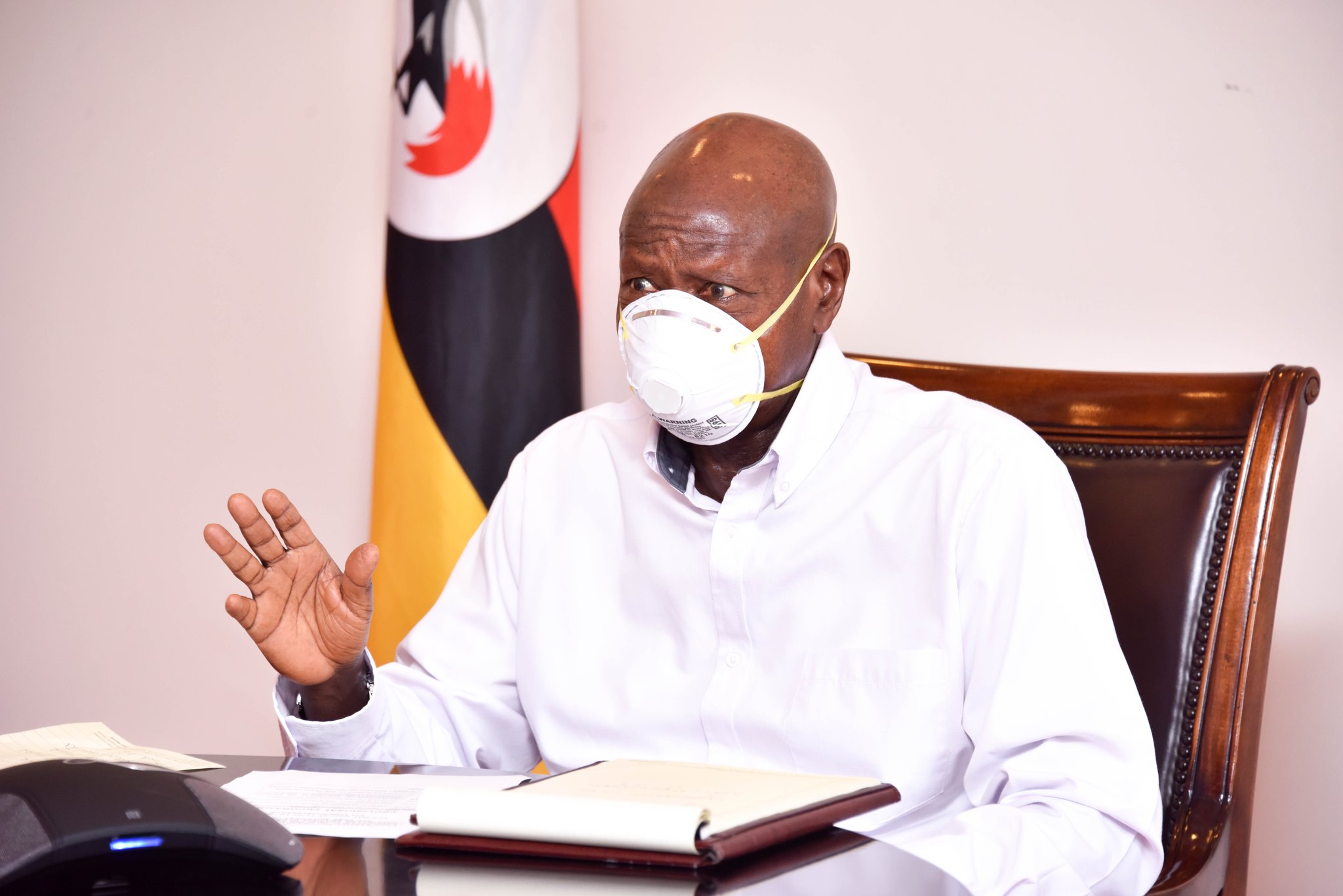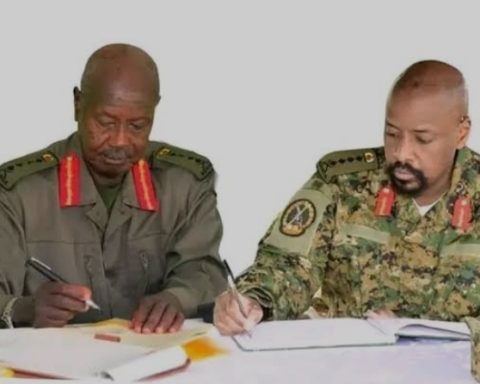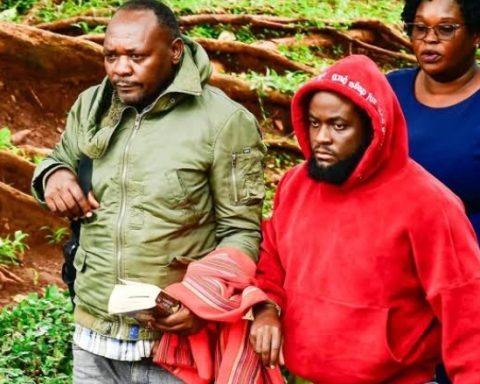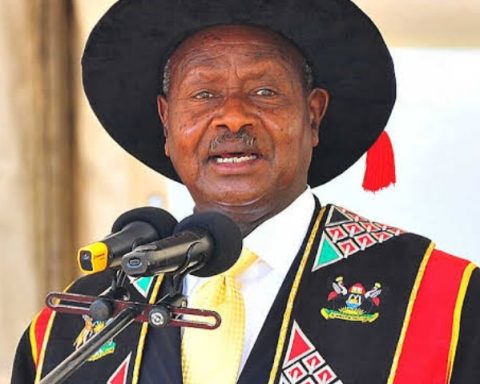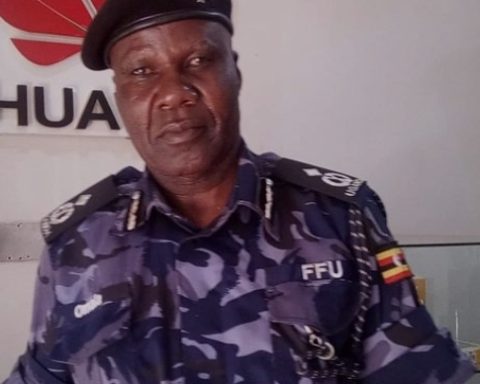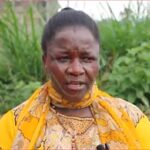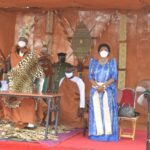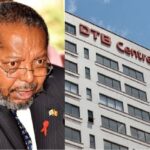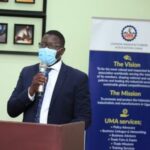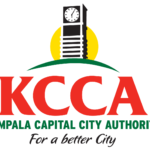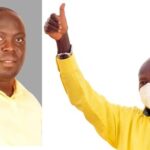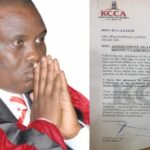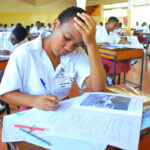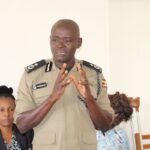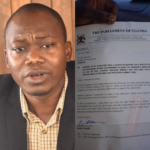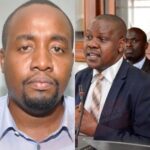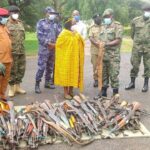Countrymen and countrywomen.
Greetings from the Government and the political leadership of the country. Congratulations on our battle against the corona-virus, against the floods, against the rising waters of the Lakes and the Rivers, against the land-slides, against the floating islands and against the locusts. The locusts have been defeated by the UPDF and the floating islands were cleared by the Ministry of Works and Transport. The floods, unfortunately, caused the deaths of 16 people in the areas of Kasese, Bundibugyo, Isingiro and Kween; but the Government was able to provide relief to the displaced people.
The rising waters of Lake Victoria could not damage our Electricity Power Dams because, unlike in 1964, the Government had built the new canal that takes water to the electricity station on the Jinja side, the Kiira Power station, which canal added itself to the western canal, on the Njeru side, that takes water to the old power station of Nalubaale. This enables us to, if necessary, open for 3000 cubic metres of water per second to flow out, unlike in 1964 when they could only open for a maximum of 1300 cubic metres of water per second.
This enabled us to go from releasing the 600 cubic metres per second to 2400 cubic metres per second, thereby saving the dams of electricity and also preventing flooding around the whole of the Lake Victoria basin. The Ugandans that had encroached on the beaches, should peacefully vacate so that they do not suffer losses in future and do not damage the environment as they have been doing by causing the Lake to silt, etc. The floating islands were quickly removed by a combined engineering Task Force, led by the Ministry of Works, using the magnificent Earth Moving Equipment we bought from Japan. On all this capacity for resilience, I congratulate the Government and the Ugandan people for coping effectively with these challenges.
However, for today, the main attention is on the corona virus. When this global catastrophe descended from China, through Europe and the Gulf countries, to East Africa, after quickly conferring in depth with our scientists, we promptly realized that, for now, this enemy could only be handled in two ways, as I have told you before.
The two ways are: avoiding the virus by tonsemberera, otampika, Luo-bed-mabor-ki-lawoti, Ateso-mum-ibuni-eiduny-kede-eong, Lugbara-miesimimavuko, that the poor English language can only describe as social-distancing; using masks so that your rwoya (what the poor English calls droplets), referring to the vaporous breathe that comes out of us that you can see as mist if you blow your breathe against the mirror or even glass spectacles, does not carry the virus from you to another person; sanitize surfaces where the virus can survive for up to 4 days on surface of, for instance, table-tops, door handles, chairs, arm-rests, micro-phones, etc.; regularly washing your hands with water and soap or use sanitizers; and never touching yourself in the soft parts of your body such as the eyes, the nose and the mouth with unwashed hands. All this is method one that we could see was available immediately.
The second method, was to enable the body to fight the virus by treating the treatable diseases the victim may have, known as co-morbidities, such as diabetes, blood pressure, the cancers, HIV, etc. and boosting the defenses of the body by giving the victims the necessary vitamins, the other drugs that help the efficiency of the body such as hydroxy-choloroquine and the drugs that control the over-reaction of the body to the invasion by the virus.
Some diseases kill by provoking the body to over-react by panicking and producing too many body soldiers, in a non-coordinated way, ending up chocking up (kuniga) or blocking (kwigaza) the transport routes of the body (the blood vessels ─ emitsi) and inflaming the surrounding areas (the tissues). These were the two available ways: avoid the virus and assist the body to fight the virus if, for some reason, the avoiding has not worked.
The other two ways of defeating the virus are still being worked on, both here and abroad. These are the way of a vaccine (kugema, kutsirika) and the way of getting drugs that attack the virus directly and disable it or kill it, rather than just helping the body to fight it. We are hoping for success on the two fronts also.
In order to utilize the two available ways, between the 18th of March and the 1st of June, 2020, we announced a total of 35 measures in order to avoid the virus and treat the few that could not avoid catching the virus. Those measures were the following:
1. Close all the Educational Institutions. 2. Suspend communal prayers. 3. Stop all gatherings or conferences. 4. Banned Ugandans from moving to or through category one (I) countries. 5. Initially, allowed returning Ugandans provided they undergo mandatory quarantine, at their cost, for 14 days. 6. Allowed the non-agricultural gathering points e.g. factories, hotels, large plantations, etc. 7. Discouraged the hexagonal, extravagant Ugandan-style weddings. 8. Burials for a maximum of 10 people. 9. Suspended weekly or monthly markets. 10. At that time, allowed the public transport systems. 11. Suspended all the discos, dances, bars, sports, music shows, cinemas and concerts. 12. Advised the public to maintain hygiene measures. 13. Advised the public on good nutrition. 14. Stopped all passengers coming into Uganda by air, land or water. 15. Prohibited pedestrians from entry into the country from the neighbouring countries. 16. All public passenger transport vehicles were stopped. 17. Only food sellers to remain in the markets. 18. Private vehicles allowed to continue but with only 3 people maximum per vehicle. 19. Ambulances, army vehicles, garbage collection vehicles, etc., would continue moving if needed. 20. Banned the movement of all privately owned passenger vehicles.
21. Suspended the shopping arcades, shopping malls, hardware shops. 22. Directed all the non-food shops (stores) to close. 23. The super-markets were allowed to remain open at that time. 24. Established Food Markets in Kampala and the other towns were allowed to continue being open. 25. The food sellers were not allowed to go home during the 14 days. 26. Salons, Lodges and garages were ordered to be shut for the subsequent 14 days. 27. Like the farms, factories were allowed to remain open. 28. Construction sites were allowed to continue operating if they were able to encamp their workers. 29. The essential services i.e., the medical, agriculture, etc., were allowed to continue to operate. 30. Cargo transport by train, plane, lorry, pick-up, tuku-tukus, bodaboda and bicycle, were allowed to continue operating but only with minimum numbers of crews; 31. URA could not to close business; 32. Later, gatherings of more than 5 persons were prohibited. 33. The prohibitions for in-coming and out-going means of transport did not include the cargo planes, lorries, pick-ups and trains; 34. Health emergencies were allowed; 35. Boda bodas to stop at 5:00pm.
As a result of those measures, we have been able to blunt the invasion of the virus. Why do I say that? It is because, after more than 90 days of battle with the virus, Uganda has only got 774 positive cases of corona-virus after testing a total number of 170,789 persons. There were 1,067 non-Ugandans that tested positive but we sent them back to their respective countries. Within the figure of 774 of the Ugandans that are positive, 373 are truck drivers. Therefore, the graph of Uganda is as seen below, along with the graphs of other countries:
Moreover, none of the corona-virus infected persons has died. Instead, out of the 774 that have been found positive, a total of 631 have been treated in the manner described above and they have healed and have been discharged from hospital.
Therefore, as far as the death curve of Ugandans from the corona-virus, the graph of Uganda, together with other countries is as here below:
However, as I told you when I last addressed the country on the 1st of June, 2020, these lockdowns cannot and should not be in force forever. They affect sections of the economy.
Therefore, last time, the following measures were directed:
1. The shops selling general merchandize were allowed to open provided they were not in the shopping malls, the shopping arcades and the food markets.
2. The heroic market women that had been sleeping in the work places for all those days, were allowed to go home and come back to work daily if they wanted to.
3. Opening of the public transport means of mini-buses, buses, taxis, provided they carry only one half of their normal capacity plus the conductor except in the 42 border districts.
4. Hotels and food restaurants were allowed to open but had to observe social distancing.
5. People with private cars were allowed to drive as long as the car did not carry more than 3 people, including the driver. However, this relaxation of restrictions on private transport does not extend to the 42 border districts (including island districts).
6. Shopping malls, starting with the 4th of June, 2020, were allowed to open provided they observe social-distancing.
The guiding logic in all this, is not wealth, business, jobs or convenience. It is life. Do we live even when businesses suffer and jobs are lost or do we continue doing business, making money and die? I, unhesitatingly, choose life. That is the logic. Moreover, with discipline, we can even have both: life and wealth. This is provided we do what is recommended.
From the results of the tests for the last 96 days, the number of drivers that are testing positive is reducing. Unfortunately, we are getting new positives case from within the population that are mostly linked to either the drivers or the infiltrators from the neighbouring countries.
Hence, 62 of the positive cases are from Kyotera and 59 are from Amuru. This is on account of the elements that come through the porous borders. Since many people end up in Kampala and with the opening of the public transport system, although with some restrictions, we are beginning to see cases in Kampala. The number is now 37.
We are, therefore, entering a more dangerous phase. Previously, the problem was from the returnees from abroad, from the drivers and from those who pass through the porous borders from the neighbouring countries. However, with the re-opening of the public transport and the movement of private cars, we are beginning to get cases of people who are positive but whose source of infection you cannot easily trace. If somebody picked the infection in a bus or a taxi where people were not observing the SOPs, how will you easily trace those who were in the bus or taxi with him or her?
Therefore, our scientists have been tasked to audit all the remaining restrictions and advise. In particular, some of the stakeholders have been petitioning the leadership to, more or less, completely re-open all the activities of the country. Whenever I get such requests, I refer them to the scientists.
Here below is their response:
1. Adjustment of the curfew time
The aim of the curfew was primarily to act as an enforcement tool to prevent high risk nocturnal activities/establishments like Bars, Nightclubs, etc., from conducting business and to deter crime under the cover of darkness. The start of the curfew at 7pm (just before darkness) and end at 6.30am (just at the beginning of daylight) was deliberate to deter crime. Pushing forward the curfew time from 7pm to 8pm, triggers delayed closure of other sectors like shops, supermarkets, public transport and gives opportunity of engaging in crime which strains law enforcement.
Uganda is in phase three of the Covid-19 pandemic as evidenced by the clustered cases in Amuru, Kyotera, and Buikwe, while the other border districts remain at high risk. Activities that promote convergence with non-feasible mitigations, can lead to occurrence of more clustered cases and eventually general community transmission. From the epidemiological point of view, the curfew acts as a measure to restrict activities that depend on convergence of people from taking place, hence reducing the risk of spreading COVID-19. The idea is to discourage gatherings in homes, hotels, restaurants, etc. Going home early and staying home the whole night is part of the prevention. It means less mixing. The curfew time is, therefore, strategic to reduce risk of spread and preempt crime.
2. Increasing numbers from the current 3 people in private vehicles
The current recommendation is for a private vehicle to have not more than 3 occupants, inclusive of the driver. This can be increased to four people in a vehicle. The requirement for masks for all vehicle occupants should be maintained, preferably with natural ventilation.
3. Boda Bodas
The Boda Boda business is one that relies of transportation of goods and people. The Boda Boda riders and passengers are in close proximity during travel. Yet, physical distancing is an important prevention strategy for COVID 19.
Secondly, Uganda has transitioned from imported cases to phase 3 of the epidemic, with the epicenters in the districts of Amuru, Kyotera and Buikwe. Further, the boda bodas don’t use traditional/gazetted routes like main roads or feeder roads. Boda Bodas, if allowed to transport people at this stage of the epidemic, may lead to further spread with complexity in tracking cases and contacts, given the large number of people they transport and penetrating the society and reaching where the vehicles do not reach.
People, walking to their homes is safer than the bodabodas spreading with passengers in the community.
The mitigation measures like putting a barrier between the passenger and rider to prevent contact may pose additional risk of hurting the rider/passenger in case of a fall. The materials used for the barrier could also increase risk of COVID-19 transmission since some materials maintain viability of the virus longer.
The innovation of introducing the barrier is applauded. However, there is need to review the risks and provide further guidance through SOPs. The innovations will be reviewed by the MOH in consultation with the ministry for transport and the Boda Bodas Association. In the interim, they should continue with only the transportation of goods.
4. Places of Worship
Places of worship are characterized by the following risk profiles;
(a) Clustering with many people of unknown risk from multiple points of origin — these will open multiple congregations across several religious denominations countrywide and potential to fuel infections across the country.
(b) Difficulty to enforce preventive measures like physical distancing.
(c) Closed indoor settings where transmission is more efficient than the airy outdoor settings.
The various places of worship by nature attract persons irrespective of their nature, lifestyle and risk profile. Mitigation by use of masks, hand and cough hygiene may also be difficult to enforce complex especially in special religious ceremonies such as Holy Communion.
Finally, contact tracing could be complex in the event of exposure of multiple people to COVID-19 since there are no records or listing of congregants.
The restriction on religious gatherings should be maintained and reevaluated in the last phase of lifting of restrictions. The NTF and MOH should engage and involve religious leaders in the COVID-19 response across various levels, given their critical role in shaping societal perspectives and behaviors.
5. Arcades
The closely knit multistoried densely populated buildings with multiple entrances, no service areas for parking commonly known as arcades are areas where there is close clustering of people with unknown risk profiles. The arcades are interconnected and the ventilation is poor, which increases the risk of transmission of COVID-19. The ability to enforce physical distancing is minimal as witnessed by what is happening in Kikubo in Kampala.
We have already experienced clusters of COVID-19 in work places e.g. a factory in Buikwe area. The multiple entrances compounded with the convergence of people makes it difficult to track people in case of contact tracing.
The NTF should direct the MOH, Ministry of Trade, and KCCA to engage with the arcade owners to identify potential arcades to pilot prevention procedures.
KCCA, MOH, and Ministry of Trade should also review and enhance prevention compliance within the open shopping centers particularly Kikuubo and other downtown centers.
6. Mobile markets
The Mobile markets have a similar risk profile to arcades due to a high level of clustering. Further, they attract people from far and across various districts with potential to exacerbate disease transmission. More permanent markets could be easier to control in relation to prevention of transmission and tracking of contacts in the event of an outbreak.
The NTF should direct the MOH, Ministry of Agriculture, Fisheries and Animal Industry and Ministry of Trade to develop options and SOPs to reorganize livestock and other mobile markets including agricultural produce.
7. Hawkers, food and other vendors
A hawker is defined as he/she who travels about selling goods, typically advertising them by shouting: “abatembeyi”. These persons interact with persons in their homes, offices and cars when at traffic light stops. The interactions are between people of unknown risk profiles and if one was positive, the transmission chain would potentially be explosive. It’s difficult to track these persons as they are highly mobile. It would be wise not to encourage hawking during this third phase of the pandemic. Additionally, they should be targeted with communication to ensure compliance to prevention measures.
8. Repatriation of bodies for burial in Uganda
COVID-19 is transmitted through respiratory droplets and by contact with contaminated surfaces. Current evidence suggests that dead bodies do not pose increased risk of transmission if handled with the appropriate precautions including ─ use of personal protective equipment including gloves, gowns, aprons and masks, preventing fluid leakage and minimizing manipulation of the bodies. Bodies should, therefore, be repatriated if they fulfill the following conditions:
• Medical Certificate of Cause of Death;
• Post-mortem report or Comprehensive Medical Report from the attending doctor/health facility;
• Embalming certificate (Embalming may not be done for COVID-19 bodies);
• Copy of passport/identification document of the deceased (The original passport /travel document/identification document to be presented to immigration authorities);
• Import license/import authorization from the Director General of Health Services;
• Appropriate packaging – wrapped in a waterproof body bag then placed in a zinc lined coffin and an outer metal or wooden box.
The ministries of Health, Foreign Affairs and Internal Affairs, will provide guidance and coordinated mechanisms to implement the repatriation. The relatives should be advised to contact the Ministry of Foreign Affairs for guidance on the process.
The accompanying relatives will be required to undergo quarantine and other procedures for incoming persons and the burials will be conducted following the existing procedures for scientific burials. For the bodies of COVID-19 victims, the appropriate guidance will also apply.
9. Salons
Most of the activities in salons e.g. hairdressing, massages, etc., involve close contact between the dressers and their clients. Salons also often have many customers from multiple risk profiles and settings. Contact tracing of exposed individuals, if this occurred, could also be complex without detailed contact information of the customers.
The restrictions on salons should be maintained given the experiences elsewhere — salons have been documented to spread infections in other countries e.g. Ebola in West Africa, COVID-19 in the US, among others. NTF should direct the ministries of Health and Trade to engage with the salon owners to explore options for safety and training.
10. Travel in and out of Uganda for medical reasons
Travel into Uganda for treatment: Several people from neighboring countries such as South Soudan, may wish to enter Uganda for purposes of accessing medical care. Entry into Uganda has been restricted, except for cargo related handlers such as truck drivers and air cargo crew. This decision was made to reduce the risk of importation of COVID-19 cases, due to the rapidly growing COVID-19 pandemic in all neighboring countries. This risk has increased with established community transmission across all neighboring countries. Opening for individuals to come in for care would thus further increase importation of COVID-19 cases.
The restrictions on entry across borders should be maintained until the issues above are resolved. Any urgent entry should be handled by the MOH on a case by case basis.
Travel outside Uganda for medical reasons: Like the entry into Uganda, travel outside Uganda will require opening several other related activities, expanding testing and quarantine facilities and detailed SOPs for the screening and authorization of individuals to travel.
This restriction should also be maintained. MOH and other relevant ministries should handle requests on a case by case basis.
11. Opening of the border districts
Restrictions on in country travel were lifted for several districts, excluding the border districts. After several weeks of tracking cases and contacts, the MOH has further mapped out the risk profiles across the districts to inform opening of additional districts. The maps below show the number of cases of community transmission identified across districts in the past two weeks. The number of districts and overall number of cases reduced in the past week. However, continued vigilance is required in all the districts that reported cases in the past two weeks. Restrictions should thus be maintained in the districts with evidence of community clusters and other high-risk characteristics in the past two weeks as detailed below:
a. Districts with clusters/potential clusters of infections that are still under investigation: Rakai, Kyotera, Amuru, Buikwe (cluster around one factory), Gulu, Arua, Adjumani, Moyo, and Nebi
b. Districts with refugees—to allow time to test the refugees and a risk profiling before the final decision is made: Zombo, Adjumani and Arua.
c. Districts with main border entry points that still need more comprehensive surveillance and testing and those with water bodies and informal crossings across water bodies: Busia and Bulisa, Kampala and Wakiso districts have localized, for example in one quarantine site ─ Mulago paramedical school. More vigilance is required in surveillance and compliance with prevention in the densely populated and clustered work places such as Kikuubo and other downtown locations.
The rest of the border districts can be opened but with continued vigilance and reporting of any suspicious events and compliance to prevention measures.
12. Compliance with COVID-19 prevention measures
To support the process of continued opening/lifting of restrictions, there is need to ensure compliance to COVID-19 prevention measures including wearing of face masks in public spaces, hand and environmental hygiene, among others. More effort is needed in areas with poor compliance to prevention measures such as Kikuubo in Kampala and other crowded down-town settings, some supermarkets that do not regulate the number of shoppers or enforce use of masks, crowding around small shops in suburbs, etc.
There are also several people who do not wear their masks properly and leave their nose and/or mouth uncovered with the masks hanging on the chin. This renders the masks useless.
These incidents of non-compliance pose a risk to all Ugandans and may lead to further spread of the infection. For example, we have experienced an outbreak in one factory with several people affected. Ugandans should know that if the disease escalates it may call for resumption of the restrictions to contain the disease spread and reduce deaths among the population. Several countries have reinstated restrictions due to poor compliance and increasing COVID-19 infections, a state that Ugandans should avoid.
Therefore, the only safe activities that can be re-opened now are the public passenger transport and private cars in some of the 33 border districts that do not have the corona virus. These are: Amudat, Bududa, Bukwo, Bundibugyo, Buvuma, Hoima, Isingiro, Kaabong, Kabale, Kalangala, Kanungu, Kasese, Kikuube, Kisoro, Kitgum, Koboko, Kween, Lamwo, Maracha, Mayuge, Moroto, Moyo, Namayingo, Namisindwa, Ntoroko, Ntungamo, Pakwach, Rubanda, Rubirizi, Rukiga, Rukungiri, Sironko, and Yumbe.
There will also be a relaxation on the number of passengers in private cars from 3 to 4 including the driver, provided they are all putting on masks.
As far as the Educational Institutions are concerned, nobody who cares about Uganda or our children is talking about re-opening them as of now. It is just too risky. I am very hopeful on the front of the vaccine and treatment. There is a recent talk of the drug Dexamethasone that is very abundant because our doctors have been using it as an anti-inflammatory drug to treat brain inflammation, allergy, asthma and other conditions. Our doctors are studying it and the search for the candidate drugs with anti-viral activities is in high gear. We have given them all the support.
With the school population, let us be patient. In the meantime, we are going to launch a big long-distance education programme, certainly through radios. We are going to give free radio-sets to all the homesteads. Radios will soon be distributed. Also, the printed educational materials will be provided. I was personally, in favour of the free TV sets per village for the learners. The scientists are studying this on account of avoiding crowding by the learners in the villages, which may be a source of spreading the disease. They said the radio-set was better because it was per household. It is individual home-stead based.
With the politics, the Independent Electoral Commission, in consultation with the scientists, apparently, looked at three options, as far as the General and Local Government Elections that are due for early next year, are concerned. The three questions to be answered were:
1. If there is no vaccine or clear treatment for this virus by the time of the elections, can the Conventional Elections of mass rallies, processions, etc., be safely held?
2. Can and should the elections be postponed?
3. Is there a hybrid that can be constitutionally used to hold the elections on time, but safely?
They opted for number three (3) because the danger is in the holding of public gatherings. If you eliminate those and messages of the contestants are passed on through the radios, TVs, socio-media, etc., the gathering for the elections themselves, can be safely managed with hand-washing, social-distancing (okweeha emyaanya ─ leaving gaps of the necessary metres between voters in line ─ a type of tonsemberera, otampika). This would remove the uncertainty that would be created by the postponement of the elections but also ensure that elections are held safely. I call upon Ugandans to support this option because it can work if all concerned do their assignment diligently.
I end by reminding all of you of the avoidance measures:
(i) tonsemberera, otampika (social-distancing of 2 metres from person to person);
(ii) wash your hands with water and soap or use hand sanitizers to kill the virus your hands may have picked;
(iii) sanitize surfaces of tables, door handles, etc., often and sterilize documents and money by putting them in containers that can achieve the temperature of 70º C (this is hot enough to kill the virus but not hot enough to burn the documents ─ kusiriiza);
(iv) put on face masks, covering the nose and the mouth, all the time you are in a public place or in a car with others; the Ministry of Health should advise our people on the issue of air-conditioning in cars; it may be a danger channel; I hate air-conditioning ─ it is un-natural and dangerous; that is why I have no air-conditioning in any of my houses and I, long ago, switched off your air-conditioning in your State House, in Entebbe;
(v) never touch your nose, your mouth or your eyes with unwashed hands.
Recently, on Heroes Day, Mzee Sseduunga of the Veterans Association said: “Obulwadde teburiina magulu. Yeffe ababutambuuza” ─ “the corona virus has no legs; it is us that transport (spread) it by our carelessness”. We have done well. Let us not relent when we have so far succeeded. The Acholi proverb says: “Agulu pii too idogola” which means that the water-pot breaks when you are about to deliver the water into the house, yet you have successfully carried the water from the well from many kilometres away. The Luganda one says: “Obwaato buffa magoba” ─ the canoe sometimes breaks when you are in sight of the shore. The Runyankore one says: “Waremerwa hakye nk’eyazariire akeenda ─ you failed narrowly to achieve your target like a cow that delivers a pre-mature calf when the ninth month is just beginning. We are about to succeed. Let us not relent.
The categories of our people that are affected by the lockdown, such as the salon operators, private universities, private secondary schools, private primary schools, etc., should be registered so that we can see how to get them, not free money, but cheap capital when their activities resume or even help them to do other activities. The Ministers of Gender and Education will follow this up.
God bless Uganda, God bless Africa.
I thank you.
![]()

